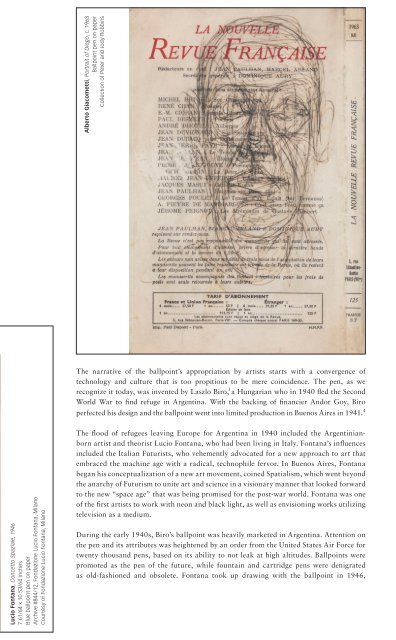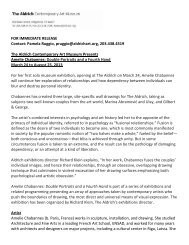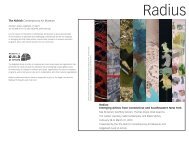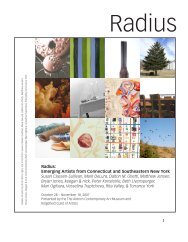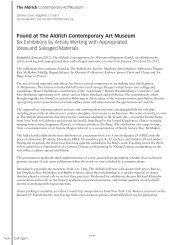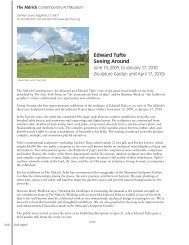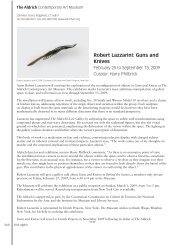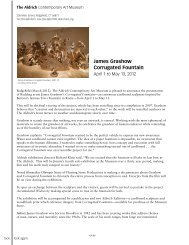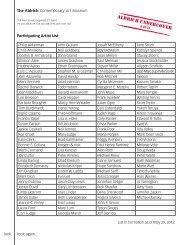Ballpoint Pen Drawing Since 1950 Rita Ackermann, Bill Adams ...
Ballpoint Pen Drawing Since 1950 Rita Ackermann, Bill Adams ...
Ballpoint Pen Drawing Since 1950 Rita Ackermann, Bill Adams ...
You also want an ePaper? Increase the reach of your titles
YUMPU automatically turns print PDFs into web optimized ePapers that Google loves.
Alberto Giacometti, Portrait of Diego, c. 1963<br />
<strong>Ballpoint</strong> pen on paper<br />
Collection of Peter and Jody Robbins<br />
The narrative of the ballpoint’s appropriation by artists starts with a convergence of<br />
technology and culture that is too propitious to be mere coincidence. The pen, as we<br />
3<br />
recognize it today, was invented by Laszlo Biro, a Hungarian who in 1940 fled the Second<br />
World War to find refuge in Argentina. With the backing of financier Andor Goy, Biro<br />
perfected his design and the ballpoint went into limited production in Buenos Aires in 1941. 4<br />
Lucio Fontana, Concetto Spaziale, 1946<br />
7 61/64 x 10 53/64 inches<br />
Blue ballpoint pen on paper<br />
Archive #844/12, Fondazione Lucio Fontana, Milano<br />
Courtesy of Fondazione Lucio Fontana, Milano<br />
The flood of refugees leaving Europe for Argentina in 1940 included the Argentinianborn<br />
artist and theorist Lucio Fontana, who had been living in Italy. Fontana’s influences<br />
included the Italian Futurists, who vehemently advocated for a new approach to art that<br />
embraced the machine age with a radical, technophile fervor. In Buenos Aires, Fontana<br />
began his conceptualization of a new art movement, coined Spatialism, which went beyond<br />
the anarchy of Futurism to unite art and science in a visionary manner that looked forward<br />
to the new “space age” that was being promised for the post-war world. Fontana was one<br />
of the first artists to work with neon and black light, as well as envisioning works utilizing<br />
television as a medium.<br />
During the early 1940s, Biro’s ballpoint was heavily marketed in Argentina. Attention on<br />
the pen and its attributes was heightened by an order from the United States Air Force for<br />
twenty thousand pens, based on its ability to not leak at high altitudes. <strong>Ballpoint</strong>s were<br />
promoted as the pen of the future, while fountain and cartridge pens were denigrated<br />
as old-fashioned and obsolete. Fontana took up drawing with the ballpoint in 1946,


